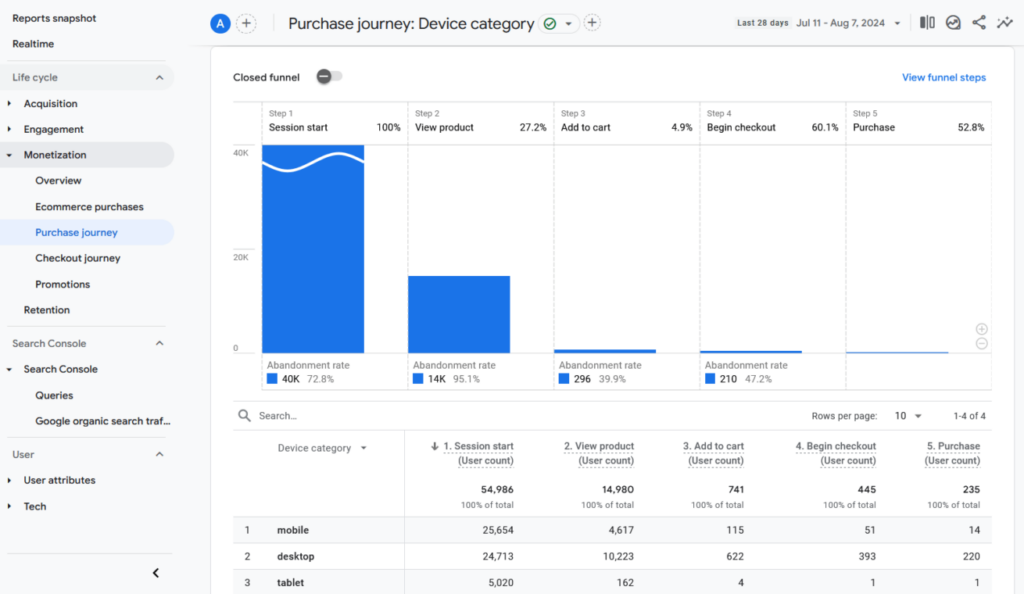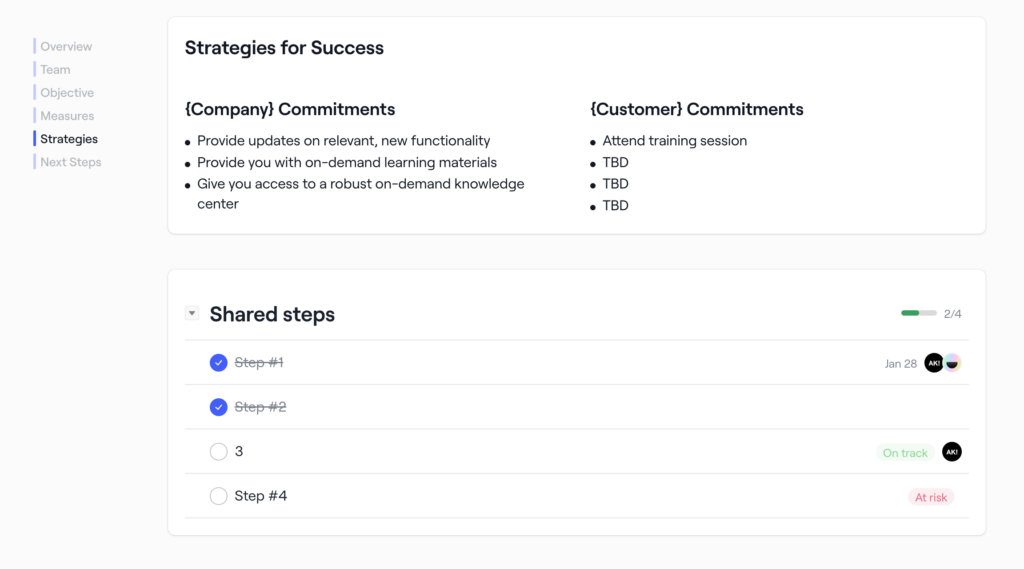Do your new feature updates have worryingly low adoption rates?
Do customers complain about your onboarding process – citing a lack of resources and difficulty navigating the product?
Both of these issues, and others like them, can result from failure to create a hypercare plan before implementing a product update or new feature.
The solution: Creating a comprehensive customer success plan so the transition goes as smoothly as possible. Let’s explore what that means and how you can get started.
What Is Hypercare?
What is hypercare, and how is it distinct from traditional customer support?
Hypercare is support that happens within a defined period and for a specific purpose. The term is often used to describe support administered during the customer onboarding process, to set buyers up for success with an unfamiliar product or service.
However, it doesn’t have to be restricted to new customer onboarding. Hypercare can also be a heightened degree of support offered at any significant point.
For that reason, it’s particularly relevant to businesses that sell software and similar products – anything sold on a subscription model that goes through periodic changes. SaaS businesses also tend to experience higher churn in the ‘adoption’ and ‘loyalty’ stages of the customer journey.
When customers first adopt your product, they must learn to navigate and use it effectively (and fast). Later on, hypercare might be needed after a product or feature update. If you add new AI-based functionality to your core software, for example, it may confuse users unless you provide the right resources and guidance.
Whenever it happens, the role of your support team during hypercare is to ensure customer success. It requires additional time and effort, but it is well worth the ROI if it encourages long-term retention.
What Value Does Hypercare Add To the Customer Experience?
Hypercare is a key facet of SaaS customer support, and is therefore essential to improving the customer experience.
If your business sells software in any capacity, we highly recommend implementing hypercare across multiple touchpoints. Exactly how you do that will depend on your product, niche, and scale.
When your business is quite small, a higher degree of care can be more manageable. 1-on-1 onboarding with clients isn’t out of reach.
As your user base grows, you might add a dedicated account manager or concierge onboarding to more expensive plans. The cost-to-benefit ratio offsets the price of dedicating more agent time to helping specific clients.
Still, hypercare will involve some additional costs, at least in terms of time and resources. However, as a proactive measure, it should reduce overall support costs in time by eliminating friction and mitigating reputational damage via negative reviews.
Hypercare also improves key customer service metrics, such as your Customer Satisfaction (CSAT) scores and Net Promoter (NPS) ratings.
Proactive support enhances customer satisfaction by alleviating frustration. Plus, because hypercare prioritizes personalized interactions and enhanced communication channels, customers are much more likely to feel valued and heard.
How To Provide Hypercare That Makes a Difference (4 Tips for Success)
As a smaller business, you can leverage methodologies that don’t scale. That includes speaking personally to your customers, in order to understand what works and what doesn’t. That difference in personalized care can set you apart.
At the same time, providing the hyper-attentive level of support that hypercare calls for can be especially challenging when resources are tight. Hypercare is short-term, but must be applied to a broad range of buyers at different stages of the customer journey.
Here at Groove, we only have to look at our own journey to see the value of that effort. Over the years, we’ve found that hypercare reduces churn and improves retention. Here’s what we’ve learned about how to make it cost-efficient and effective.
#1. Identify Touchpoints That Require Hypercare
Before you can make a plan for implementing hypercare, you’ll need to identify areas within your business that require enhanced support. To do that successfully, you’ll need to map out the entirety of the customer journey.

Customers will need additional support at specific touchpoints in their journeys. You won’t know where friction lies and how to address it until you comprehensively map out touchpoints and identify the ones that matter.
Common points of friction where hypercare is useful include:
- Onboarding, as new customers begin to navigate your product
- Transitions to higher subscription levels or plans with different features
- Software updates and new features/functionality/integrations
- New product launches
- Changes in the niche or market that may affect how people use your product
If you’re having trouble deciding which touchpoints are most relevant to your customers, there are a few things you can try. You might set up customer journey tracking, keep an eye on metrics that tell you when dissatisfaction and churn are most likely, and solicit direct feedback from users about what they struggle with.
#2. Establish a Customer Success Plan
Once you’ve determined which touchpoints require increased attention, your next step is to create a team to provide hypercare at those times. This doesn’t necessarily require a dedicated customer success department.
Instead, most small business hypercare involves assigning customer service agents to provide white-glove or personalized onboarding. Particularly knowledgeable team members can be responsible for walking high-priority clients through the relevant use cases for their businesses.
You can also offer this type of one-on-one service at an increased expense to the customer. Many businesses are willing to pay a small premium for enhanced service. And that compensation allows you to allocated the resources needed to help that customer succeed.
Speaking of which, you’ll also want a ‘customer success plan’. This acts as a roadmap to guide your support team through the hypercare process.

A strong plan identifies clear goals, designates responsibilities or priorities, and outlines the actionable steps your team will take to create an ideal CX. There are plenty of templates available that can act as starting points.
#3. Empower Users To Self-Solve
Hypercare means providing a high level of quality service. It’s easy to focus on the active work this requires from your team. However, self-service resources play an important role too, helping customers when you’re unable to.
Especially if your business doesn’t have a 24/7 support line, you’ll need readily accessible self-directed resources. Customers greatly appreciate this even under typical circumstances. During hypercare periods, it’s essential.
Buyers overwhelmingly prefer self-service as an initial contact point. They enjoy the freedom self-service provides – they don’t want to rely on someone else and wait around to get help.
Common self-service resources include FAQs, troubleshooting guides, video tutorials, and documentation articles. A key part of your hypercare strategy should be to create these kinds of resources to address the specific needs and touchpoints you’ve identified.
For example, if a new feature is coming out soon, now is the time to prepare thorough documentation and guides on how to use it. These should be available when customers need them, and you can point buyers in the right direction with emails that round up the key resources.
As for where to house them, a knowledge base can serve as your customers’ portal for help during normal and hypercare periods:
Our customer support helpdesk, Groove, comes with full knowledge base functionality built-in. You can create all kinds of self-service resources and push them live easily. Then you can link customers to relevant pages when they reach out via email:
We’d suggest starting with a strong base of general content about your products. Then you can ad specific guides during your hypercare preparation process for each update, release, and other notable change.
#4. Provide an Omnichannel Experience
Accessibility is an important aspect of hypercare. Your business needs to be readily accessible across different communication channels, especially places where your customers congregate. They shouldn’t have to go searching for help.
Providing high-quality care means that wherever users look for assistance, you’re readily available. It also means providing a predictable and consistent experience across all those channels.
If a big chunk of your customers live on social platforms, you’ll want a strong social media presence. The hypercare you provide should be just as available to people who reach out via Facebook as those who email support directly.
So don’t neglect any potential channels. Knowledge base articles, video tutorials, and resources can be sent via individual emails, but also posted where they’ll reach more customers. Your mailing list can be leveraged to update users on new features in depth, and point to relevant resources on your website.
If you use a support helpdesk like Groove, communications from various channels are funneled into one shared inbox. This simplifies and unifies your hypercare efforts. Everything is in one place, and your team can provide the same level of service regardless of where customers contact them.
Groove also includes a live chat widget that can be embedded in-app or on your website. This is particularly useful during feature updates, customer onboarding, and promotional campaigns, as it provides a contact point for immediate support.
These live chats are funneled into your Groove inbox as well, and routed to available agents through round robin assignment. This is useful for identifying users who may be in need of hypercare outside the periods or touchpoints you’ve already planned for.
Building a Strong Foundation of Care as Your Business Scales
Hypercare is just one component of successful customer support. As it grows, your business will need to deliver hypercare through periods of increased demand.
What happens when your support team is small, and can’t be stretched across hundreds of clients? You’ll need to find ways to simplify their work, automate where possible, and otherwise provide the resources they need to be as efficient as possible (thus helping as many users as they can).
Groove does all of that and more. It’s a solution built to streamline and enhance customer service for small, overworked teams. You get a centralized inbox, plenty of features to help your team organize, prioritize, and automate workflows, and more.
Sign up for a free 7-day trial to provide your customers with top-quality care while saving time!




